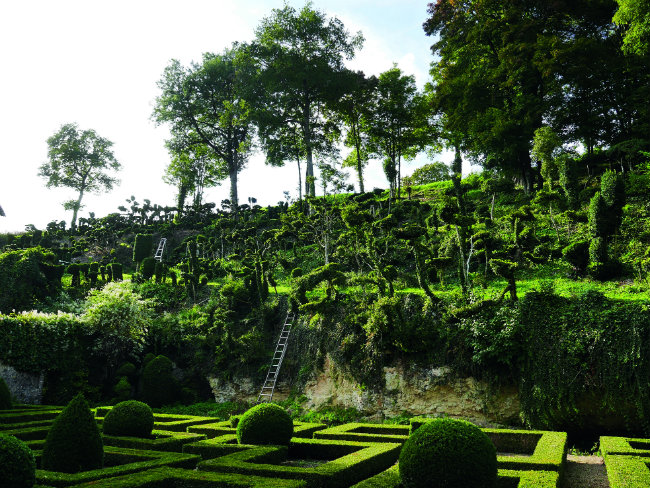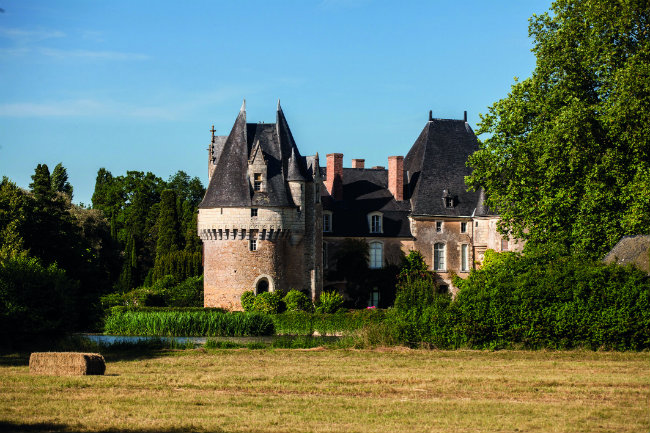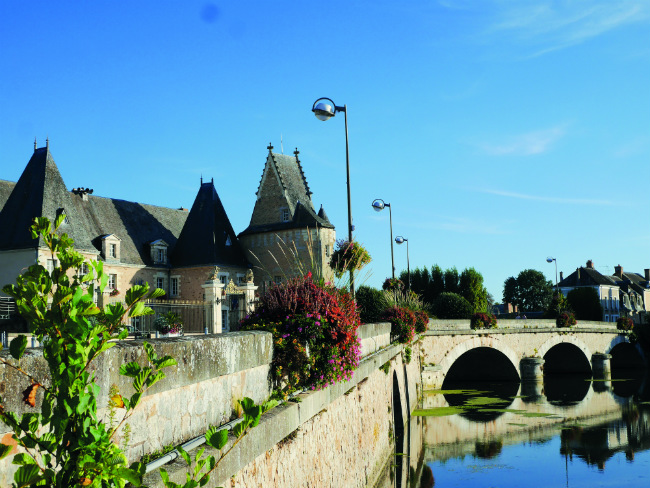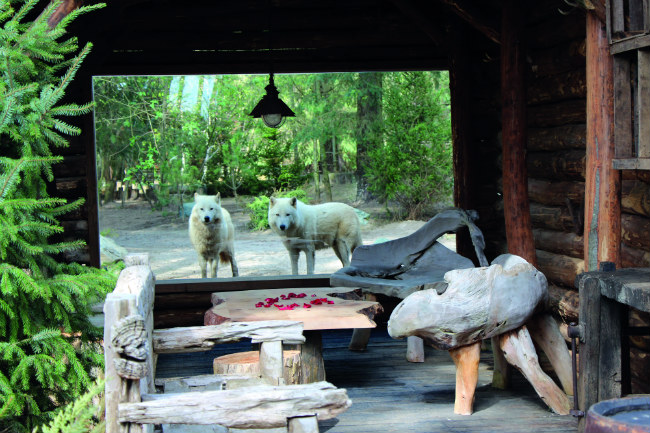The Vallée du Loir: The Other Loir is a Well-Kept Travel Secret in France
The lesser-known cousin of the Loire Valley, the well-kept secret that is the Vallée du Loir, certainly packs an incredible and diverse punch, as Marion Sauvebois discovered
“The gardens of the Prieuré de Vauboin are unlike anything you’ve ever seen,” gushes the kind soul at the tourist office, before throwing in: “But the owner may not let you in, knock and try your luck.” I hazard a chuckle. One of the region’s bucket-list sites shooing away zealous visitors? “Thierry Juge is an artist in every sense of the word, he is a bit of a hermit,” she laughs apologetically. “He spends all day in his garden; just cuts, cuts, cuts,” her fingers snip at the air for emphasis.
Perhaps the Vallée du Loir’s intriguing “A well-kept secret” tagline was not so much a crafty slogan as a disclaimer (or flat-out challenge)?
Having lingered for centuries in the mighty shadow of its internationally renowned neighbour and namesake (save for the final ‘e’), the Loir Valley – confusingly monikered after the river’s tributary – has always been, by default, a well-guarded secret; not least from the French.
Although lesser-travelled, it is in many ways a mirror image of its august cousin but without the frills. It boasts no fewer than 140 châteaux (though no royal Renaissance pile) without the hordes of selfie stick- wielding tourists – but sadly sans Valley of Châteaux seal – peaceful countryside and sweeps of lush vineyards, churning such rare vintages, their sweet nectar can only be sampled within a 20-mile radius at most. And, of late, the low-key Vallée has played its second fiddle status quite sweetly, revelling being seen as an ‘elusive gem’.

Château du Lude. Photo: OT DE LA VALLÉE DU LOIR
THE SECRET GARDEN
That said, it seems Mr Juge is pushing the cloak-and dagger hullabaloo to grand new heights. The textbook definition of “off-the-beaten path”, blink and you’ll miss the 14th-century priory in remote Beaumont-sur-Dême – which I do, twice. Squirrelled behind a near-invisible iron gate, blocked off by an old banger at that, with not a sign in sight to flag down harried travellers, it does not scream tourist landmark.
With a hint of trepidation, I scooch past the car and ring the bell, doe-eyed and ready to sweet-talk my way in. I need not have worried. Publicity-shy the eccentric Mr Juge may be, but he’s very much the genial host. “It has to remain confidential,” he smiles conspiratorially, giving the stiff gate a hard tug, creating a narrow opening just wide enough to squeeze through.

For something a bit different, step into the weird and wonderful world of Jardins du Prieuré de Vauboin. Photo: Marion Sauvebois
Stepping into his ‘back garden’ is akin to falling down the rabbit hole. Up a limestone hill, a wondrous Dalí-esque gallery of more than 700 warped topiaries (there may be more, but he stopped counting after that) stands to attention. For the past ten years, the artist has patiently and painstakingly pruned, clipped, tamed and trained these previously bare box tree shoots into free-flowing, organic shapes, creating a jungle of outlandish sculptures. But there is little time to “ooh” and “aah” as no-nonsense Mr Juge is off like a shot up the knoll.
Wading through the thick copse of his mad phantasmagoria, which was awarded the coveted Jardin Remarquable status, he points the way to an elegant effigy of a Degas-style ballet dancer, legs splayed in full arabesque; then to his coup de maître, impossibly intricate ‘embracing lovers’ topiaries beneath a leafy canopy – only pausing to inspect the sparse foliage on one of his confections for new tendrils. “These grew and matured in my hands,” volunteers the erstwhile Parisian, who took over the priory 25 years ago. “It’s my miracle,” he adds absent-mindedly before pelting down the hillock once more. And with a gruff, but by no means unkind, “Do you want me to say it’s the greatest place in the world? Of course it is, or I wouldn’t be here!”, I am ushered back through the gate, slightly dazed but chuffed to bits to be one of the chosen few to be privy to this verdant marvel.

Bazouges Château has been in the same family for 107 years. Photo: Marion Sauvebois
HOME SWEET HOME
After three days spent winding (often aimlessly) along a maze of country lanes in search of the Vallée du Loir’s elusive wonders I quickly learnt that: a) a foolproof off-line tracking app is a must – though the spellbinding scenery does make getting hopelessly lost worth the detour(s); b) one mustn’t have any qualms about snooping around (and occasionally barging into) people’s homes. As, for the most part, the Loir’s top sites are family affairs – from the pocket-sized wine domaines to the local zoo, not to mention its impressive raft of ancestral châteaux. Hence, no doubt, the region’s tendency towards privacy – and, yes, secrecy. Far from frozen monuments to a hallowed past, for all their grandeur, the piles are homesteads first and foremost, where history is lived, doggedly preserved and proudly shared by its owners. Case in point at Bazouges, a former medieval fortress and enchanting petit château nestling down rue Déserte (my SatNav goes on strike the second I type the baffling street name). Instructed to stroll through the lush Italianate gardens while the caretaker “freshened up la maison” – not something you’re likely to hear at Chambord – I spy the young heirs, casually loading bedding into their car after a brief stay at the manor house, which has been in the family continuously for 107 years.

Château du Lude. Photo: Stevan Lira
And the owners of the neighbouring Château du Lude have gone one better: holding onto their estate for 260 years – through the French Revolution. No mean feat as the current Count de Nicolaÿ is descended from Monsieur, the brother of Louis XIV himself and, incidentally, a distant relative of Queen Elizabeth II. Thankfully for their pretty little necks, the locals were rather fond of the Lord and Lady at the time. Though the pragmatic aristocrats did have the presence of mind to conceal tapestries under the floorboards to protect them from the rampaging sans-culottes. It seems they misplaced their treasure map, though, and the tapestries were discovered by chance during renovations 80 years later in perfect condition; hence the impressively vivid confections draping the walls today. Behind the lavish Renaissance façade is a strangely cosy family seat, where suits of armour and priceless heirlooms mingle with wedding photos, candid snaps and keepsakes. And it’s not just for show. “Monsieur le Comte is not far away,” trills our escort, wrinkling her nose as we enter the salon. Faint whiffs of cigar envelop us as we cross (slightly lighter-footed) the simultaneously stately and snug room – with its jumble of well-thumbed magazines, mementos and mounds of gardening tomes scattered around. I half expect the Count to pop back in chomping on a fresh cigar, ready to pick up where he left off.

Sumptuous interiors at the Château du Lude. Photo: Eric Sander
LA FLÈCHE
For centuries, the Loir’s perceived remoteness and distinct charm (yet convenient location on the historic Voie Royale route linking Paris and Nantes) lured not only aristocrats but also royalty to its scenic banks and flagship town of La Flèche. Too small to trouble most guide books, there’s more to this unassuming little nook than meets the eye. Henri IV was a frequent visitor, namely for his fix of La Flèche’s superior chicken breed; which he famously gobbled up in Poule au Pot.
So dear was the place to him that he actually had his heart returned to the town after his death. Here, he founded a college, which was later turned into a military academy by Napoleon. The Prytanée National Militaire still drills the nation’s elite today. Once a year, the school’s valedictorian is paraded triumphantly through town atop a shield and deposited at the foot of a statue of Henri IV daubed with the colours of his house. It is also from this formidable town that expeditionary fleets set off to Canada in the 17th century, contributing to the founding of Montréal.

La Flèche. Photo: Marion Sauvebois
While La Flèche’s colourful past (and present) are still relatively hush-hush, the secret has long been out of the bag about its unique zoo – yet another family affair. But it’s after hours, when the crowds have drifted home, that the menagerie truly roars to life. And you are welcome to watch – from the safety of one of its oh-so-chic safari lodges built slap-bang in the middle of the enclosures, that is.
It is just as advertised. Within seconds of entering the semi-submerged Arctic Lodge, I find myself nose to nose with curious and incorrigible “showoff” (according to his keeper) Taiko the polar bear, who’s swum straight up to the floor-to-ceiling window to size up his new roommate (me!). It’s not for the faint of heart, of course, and you enter the lodge at your own risk. Though where else can you hunker down within spitting distance of white tigers, play peekaboo with bears, or stare down a pack of wolves, and live to tell the tale?

Arctic Lodge, Zoo at La Flèche.
BAD MEDICINE
A short tootle away in Baugé-en-Anjou, it’s back to full cloak-and-dagger mode. Which is just about right as I am about to get a peep of the mother lode: the Hôtel-Dieu’s apothecary shop and the Loir Valley’s “best-kept secret”. No small brag in a land branded as a living mystery. “Wait at the top of the stairs, you’re not allowed in the apothecary alone,” the guide- cum-gatekeeper warns as I enter. Moments later she reappears, producing a key with a little flourish – locals really do love to ramp up the hugger-mugger – and locks our little group in as soon as we’ve all been led two by two into the oak-panelled chamber. As I peer around the curious cabinets, dumbstruck, I half expect Dumbledore to ‘apparate’ and take a pew at the snug desk.
One of the oldest and best-preserved showcases of 17th-century pharmacopoeia (ground beasties, eyeballs and all), on its heaving shelves are stowed no fewer than 650 original jars, lavishly painted earthenware pots and pillboxes; each filled to the brim with centuries-old herbal remedies and dubious cures. Behind the dainty curlicued labels and scribbled Latin names lie some truly nauseating concoctions. “People came here as a last resort,” quips the guide. “More for the spiritual send-off…”

More than 650 jars and pots of stomach- churning ingredients line the shelves of the Hôtel-Dieu’s apothecary. Photo: Stevan Lira
Among the cornucopia of nasty nostrums is goat’s blood, powdered woodlice, crayfish eyes and (brace yourself) puppy oil – stewed dog ‘syrup’ fed in spoonfuls to unruly children to turn them as docile as, you guessed it, pups.
For all its suspect potions, L’Hôtel-Dieu was the most salubrious hospital in all the land in the 17th century because of its pioneering approach to ‘patient stacking’, or lack thereof. In a very modern move, the sick were assigned one to a bed, instead of the usual head-to-toe arrangement (if you were lucky to have just one bedfellow). But the best – or worst, depending on your outlook – awaits outside the apothecary in the museum’s replica ward. Leading us out of the sorcerer’s lab, our guide motions to what looks like a pair of shrivelled prunes inside a display case. Nope, not prunes: mummified fingers.
A panacea prescribed well into the 18th century, Egyptian mummies’ impressively preserved remains were believed to possess near-magical properties. Flecks of shredded skin were sprinkled over wounds, inflamed welts and the like; which, all in all, did no more harm than good. Until some bright lights decided to grind the decaying digits into pills for optimum results – driving hordes of relatively sprightly patients to an early grave. Of course bona fide millennia-old mummies being hard to come by, a lucrative corpse- trafficking racket prospered…
So, are the Hôtel-Dieu’s wizened pinkies the real deal? “Yes,” the guide flashes an enigmatic smile. “But who can tell one mummified finger from another?”
Some things are best kept secret…

Arctic lodge at the Zoo, La Flèche
WHERE TO STAY, EAT AND DRINK
La Villégiature, La Flèche: A charmingly restored hôtel particulier. Stay for dinner, you won’t regret it!
5 Grande Rue, Le Lude: Run by a genial pair of British expats, it’s a stone’s throw from the Château du Lude.
Hôtel de France, La Chartre-sur-le-Loir: A Mecca for 24 Hours of Le Mans devotees, it was once a favourite with racing teams including Aston Martin, who prepared its cars in the garage.
Chez Miton, Chahaignes: An institution, this bistro-wine bar serves up classic French fare with a Japanese twist. Walk off the calories in the nearby Bercé Forest, famous for its ancient oak trees.
Domaine de Cézin, Marçon: Since 1925, the Fresneau clan has kept the locals well stocked in crisp Jasnières and Coteaux du Loir.
Domaine de la Charrière, La Chartre-sur-le-Loir: Run by the Gigou family, a leisurely dégustation is a must before zipping around the town’s famous Vignoble des Jasnières on an e-bike.
GETTING THERE
Eurostar fares from London St Pancras to Paris start from £58 standard class return per person. Train fares from London to Le Mans (change at Paris Gare du Nord) start from £86 standard class return per person. Websites: en.oui.sncf.com/en; www.vallee-du-loir.com
From France Today magazine

Students celebrate at the festival of Trime in La Flèche. Photo: © OT DE LA VALLÉE DU LOIR
Share to: Facebook Twitter LinkedIn Email
Leave a reply
Your email address will not be published. Required fields are marked *





